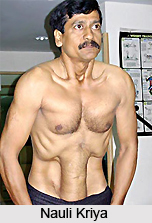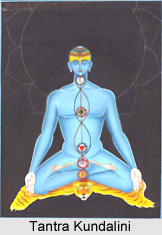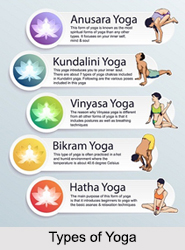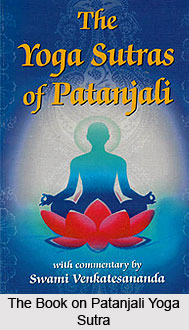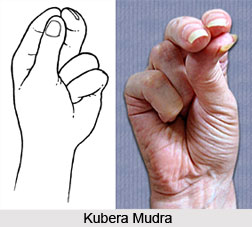Manipura Chakra is located between the naval and the heart at the pericardium. Solar Plexus Chakra is associated with the elements fire and water and connected to the internal organ stomach. The endocrine gland associated is pancreas. The colour for this Chakra is yellow. There are many asanas associated with this chakra.
Breath of Fire Exercise
Here the practitioner needs to sit in an upright, comfortable posture with his back straight and legs relaxed. Then using the muscles of the abdomen he needs to snap in his diaphragm, causing a quick exhale to escape through the nose. The mouth needs to be kept closed. Next when the practitioner relaxes his abdomen, air will naturally enter his nose and chest, causing an inhale. He then again needs to snap the diaphragm, followed by relaxation, causing another exhale and inhale. Once the practitioner becomes comfortable with this process he must repeat it quickly, causing several quick, sequential exhales. This rapid diaphragmatic breathing exercise cleans the toxins from the body, raise internal fire, and stimulate the ascending current.
Stomach Crunches
The practitioner begins the exercise with his knees bent and feet parallel. He must lace his fingers behind the neck. He now should tighten the stomach muscles until the head has lifted a few inches off the floor, exhaling. The muscles do their work in the first few inches of contraction. He must inhale as he lowers his head. This process should be repeated many times. This exercise increases the muscle tone over the third chakra, and helps tone the digestive organs.
Woodchopper Exercise
The associated tone of the third chakra is a loud "ah" sound. This should accompany the motions in this exercise. This is also an excellent anger release. Here the practitioner needs to stand with his feet planted firmly in the ground, with heels about two feet apart. Next he should raise the arms together, over the head, with hands joined. He then arches back slightly making the "ah" sound as he descends. He must also swing the whole upper portion of the body downward, bringing the hands between the legs and through. The motion should be smooth and rapid, and emit as much force and power as is possible.
Repeat five to ten times in a session and feel the energy break through into the upper body.
 Bow Pose Exercise or Dhanurasana
Bow Pose Exercise or Dhanurasana
Here the practitioner lies on his stomach with his hands on the side. He then takes a deep breath and bends his knees and reaches for his ankles. He then inhales, lifts his head, press the sacrum down, and arches his back by lifting the chest and pulling on the ankles. He should then let his arms pull his shoulders back, and balance on his belly. While doing so he also needs to breathe deeply. The practitioner must allow his hands to maintain the arch while he relaxes the rest of his body.
Belly Push Exercise
Here the practitioner from a seated position pushes both feet out straight in front, with his palms placed on the ground by his hips. He next needs to push his pelvis upward, approaching a slight arch from his feet to his head, pushing, especially through the solar plexus. Now the practitioner slowly needs to relax and return to a seated position.
Pike Pose Exercise
Resting on his back the practitioner needs to bring his feet, legs and the torso up making a v-shape with his body. The practitioner needs to keep this position as long as possible.
He must try lifting one leg at a time, or placing the feet against a wall, so that the focus remains more on belly muscles than on the thigh muscles.
Power Walk Exercise
Here the practitioner needs to stand erect with his arms bent at the elbows and hands in a fist at the chest. He next takes a step and pushes one arm outward. He then release the other arm. This process needs to be repeated.




